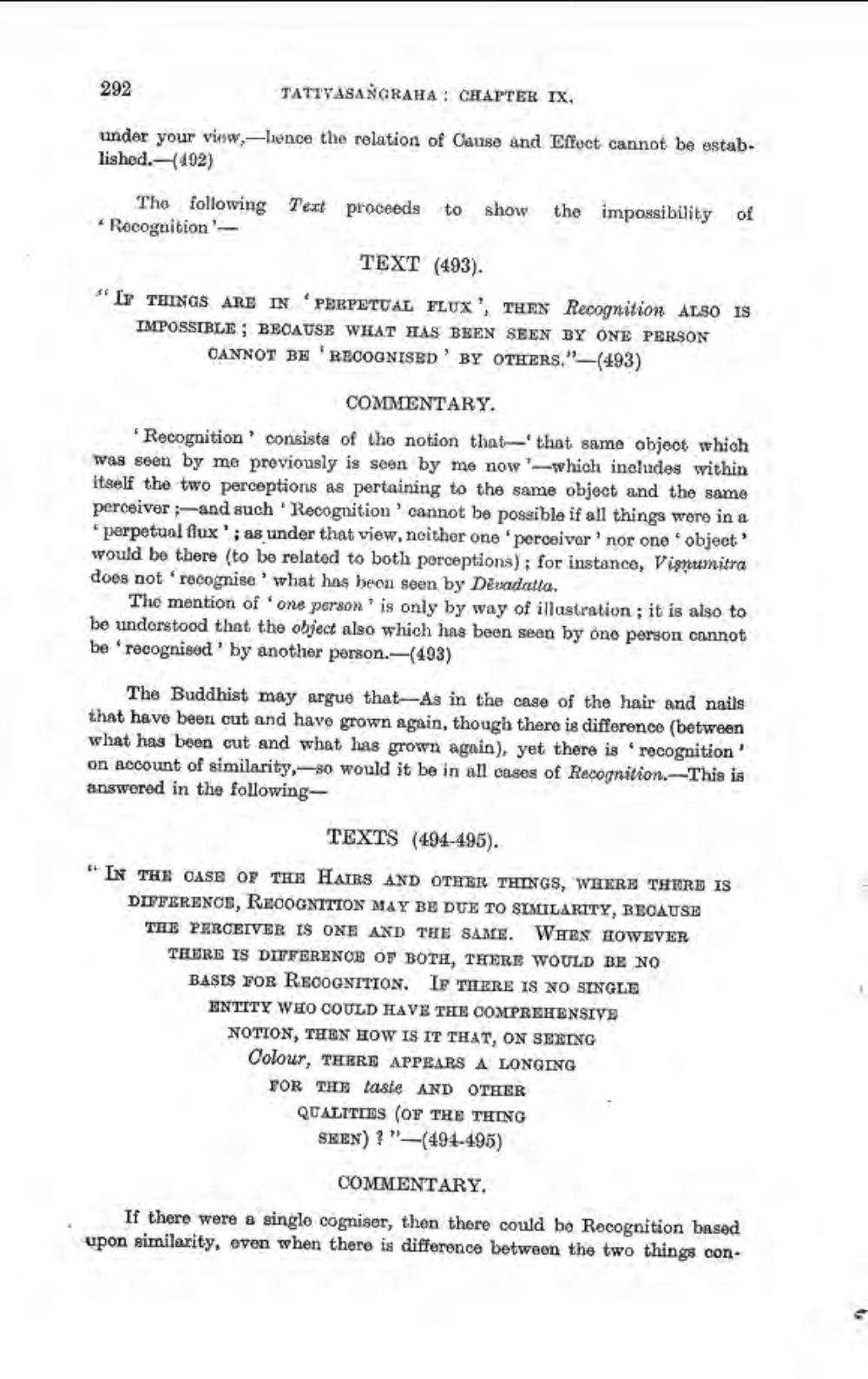________________
292
TATTVASANGRAHA: CHAPTER IX.
under your view,- lience the relation of Cause and Effect cannot be estab. lished.-(402)
The following Text proceeds to show the impossibility of Recognition
TEXT (493). *[THINGS ARE IN PERPETUAL FLUX', THEN Recognition ALSO IS IMPOSSIBLE ; BECAUSE WHAT HAS BEEN SEEN BY ONE PERSON
CANNOT BE RECOGNISED BY OTHERS."-(493)
COMMENTARY.
Recognition consists of the notion that that same abjeot which was seen by me previously is seen by me now which includes within itself the two perceptions as pertaining to the same object and the same perceiver; and such 'Recognition cannot be possible if all things were in a
perpetual flux '; as under that view, neither one 'perceivernor one ' object' would be there (to be related to both porceptions); for instance, Vişnumitra does not recognise 'what has beon seen by Devadatla.
The mention of one person is only by way of illustration ; it is also to be undorstood that the object also which has been seen by one person cannot be recognised' by another person.-(493)
The Buddhist may argue that-As in the case of the hair and nails that have been cut and have grown again, though there is difference (between what has been cut and what has grown again), yet there is recognition on account of similarity, 80 would it be in all cases of Recognition. This is answered in the following
TEXTS (494-495).
* IN THE CASE OF THE HAIRS AND OTHER THINGS, WHERE THERD IS
DIFFERENCE, RECOGNITION MAY BE DUE TO SIMILARITY, BECAUSE THE PERCEIVER IS ONE AND THE SAME. WHEN HOWEVER TEURD IS DIFFERENCE OF BOTH, THERE WOULD BE NO BASIS FOR RECOGNITION. IF THERE IS NO SINGLD ENTITY WHO COULD HAVE THE COMPREHENSIVE NOTION, THEN HOW IS IT THAT, ON SEEING Colour, THERE APPEARS A LONGING FOR THE taste AND OTHER QUALITIES (OF THE THING
SEEN)?"—(491-495)
COMMENTARY.
If there were a single cogniser, then there could be Recognition based upon similarity, even when there is difference between the two things con




